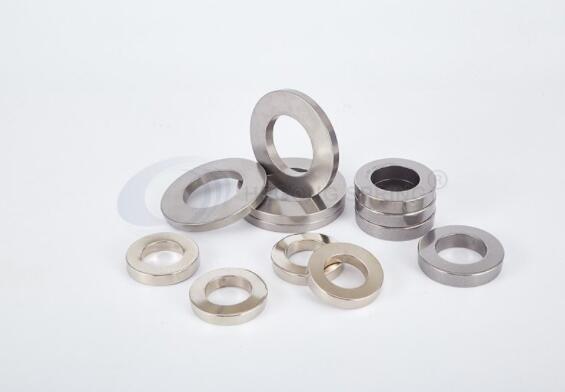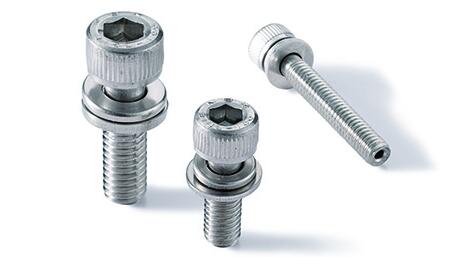Generally, washers are used to distribute a fastener’s load, reducing friction and preventing loosening. A washer is a plate with a hole, which lets a fastener pass through it. The most common shape is a flat disk with a concentric hole.

Washers are available in a variety of types, sizes, and materials (these are split washers). Steel and stainless steel are the most common, but other metals and plastics are also used, depending on the application. Regardless of the washer chosen, installing with the proper torque is the best way to ensure a reliable hold.
Before a threaded fastener, such as a bolt, is driven into an application’s surface, a washer is often placed through the end for greater protection during installation and over time. This is because threaded fasteners stress the material in which they’re used.
During installation, the washer works by absorbing the compression forces of the bolt as it’s driven into the application. A washer is positioned at the top of the bolt’s shaft where it meets the head and slides into the mounting hole, preventing the bolt head and nut from scratching or indenting the surfaces of the two fastened parts.
Otherwise, without the washer, this could damage the application’s surface and eventually loosen the fastener. So, washers often offer greater reliability.
There are several types of washers available and, as with any fastener, choosing the ideal one depends on the application. For example, they might be sprung to prevent vibration and loosening or to indicate the correct preload. They might be serrated or tabbed to prevent unscrewing. Regardless of which washer is chosen, tightening with the proper torque is the best way to ensure a reliable hold.
By far, the most common is the flat (or plain) washer. Its purpose is to distribute a fastener’s load while reducing heat and friction during the installation process.
Since flat washers are generally manufactured by pressing metal, one side has rounded corners and one side has burrs. There’s no fixed rule about which side should be placed up or down but placing the burred side facing down is typically ideal, particularly if surface pressure is a concern.
Bear in mind that these burrs can also mark the surface of the fastened object during tightening so, for certain applications, it may be better to put the rounded side down to avoid plate peeling. It’s also worth noting that flat washers are sometimes used as spacers, which is common in industrial and domestic applications.

Captive spring washers are installed under the head of a screw to ensure locking and prevent falling out. They’re ideal for semiconductor and food-related applications.
Lock washers are also quite common and designed to secure fasteners that might otherwise rotate or lose friction, such as in high-vibration applications. In other words, these washers are solely designed to “lock,” keeping nuts and bolts from coming loose. There are several types of lock washers and each is designed for use with a particular fastener or application.
For example, spring washers are a type of lock washer made by cutting out part of a flat washer so that it can form a twisted shape. This results in a spring action or an elastic force. Unlike flat washers, which are placed on both the bolt and nut sides, spring washers only go on the nut side of the fastener to establish a bond. Essentially, the cut part “bites” into the bearing’s surface.
This locking effect due to “biting” is limited to applications in which the material of the fastened object is softer than the metal washer. Spring washers have proven useful for anti-loosening, especially in the semiconductor sector due to the heat cycles and the material’s thermal expansion coefficient.
External-tooth lock washers, also known as “star” washers, have teeth located on the outside of the washer ring, which are designed to offer a stronger hold and tend to be used with larger fastener heads. Star washers increase the locking force by resisting the torque applied by the nut, preventing it from unscrewing or separating.
Regardless of the type, lock washers are designed for the same purpose: to exert a load, partially deform, and lock a fastener in place. However, the sharp hold from lock washers can leave the application’s surface scratched, which is not ideal for repeated installation or removal.
For this reason, in some applications, lock washers (mainly, spring washers) are deployed along with a flat washer to distribute the load more evenly without deforming the assembly that the fastener is secured to.
There’s also an alternative to conventional lock washers. Eccentric lock washers can be combined with commercially available hex nuts to prevent screw loosening. They consist of a bearing washer and an eccentric washer. When the eccentric washer is wedged into a bolt, the bearing washer changes the commercially available hex nut into an anti-loosening nut. The added bonus is that no tools are required for installation.
Overall, washers benefit threaded fasteners in many applications. Washers protect the surface from damage during installation, evenly distribute pressure, and prevent the fastener from moving or corroding.